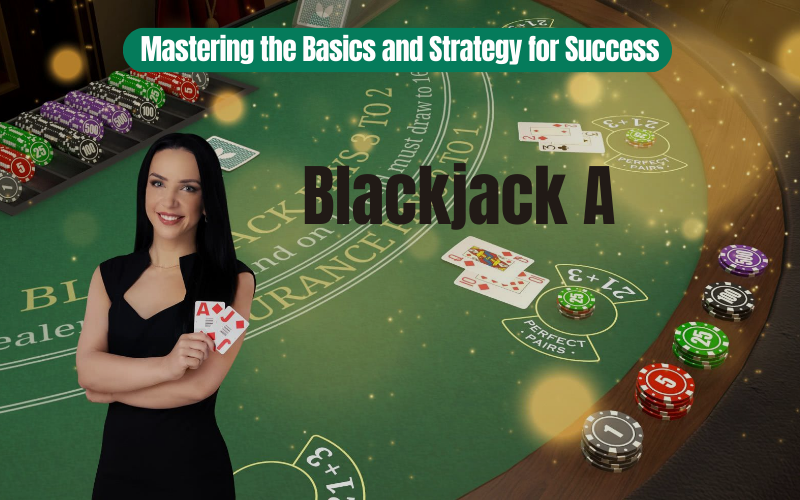Blackjack is one of the most popular casino games in the world, combining luck, skill, and strategy. Whether you’re a beginner or an experienced player, understanding the fundamental principles and techniques can significantly impact your success at the blackjack table. In this guide, we’ll explore everything you need to know about Blackjack A – from the basic rules to tips and tricks for improving your game.
What is Blackjack A?
The term “Blackjack A” commonly refers to the traditional blackjack game, often centered around a critical element of the game – the Ace card. Blackjack is also known as “21” because the objective is to get a hand value as close to 21 as possible without going over. The Ace card, one of the most important in blackjack, can count as either 1 or 11, depending on what benefits the player’s hand more. Understanding how to play with the Ace is vital, as it can significantly affect your strategy and chances of winning.
How to Play Blackjack: Basic Rules
The blackjack game is straightforward yet requires a sound understanding of the basics. Here’s a breakdown of how the game is played:
The objective of the Game
Blackjack aims to get a hand value as close to 21 as possible without going over. Players battle against the dealer rather than one other to achieve this goal.
Card Values
Each card in blackjack has a specific value. Cards 2 through 10 are worth their face value, while face cards (Jack, Queen, and King) are each worth 10 points. The Ace can be worth 1 or 11, depending on which value benefits the player’s hand.
Dealing the Cards
At the start of the game, the dealer and each player each receive two cards. One of the dealer’s cards is face-up (known as the “up card”), while the other is face-down (known as the “hole card”).
Options for Players
After the initial deal, players have the option to:
- Hit: Request an additional card.
- Stand: Keep their current hand without taking additional cards.
- Double Down: Double their initial bet and receive only one additional card.
- Split: If two cards of the same value are dealt, players can split them into two hands.
- Surrender: Forfeit the round and recover half of their bet (available only in some versions of blackjack).
Winning the Game
If a player’s hand value exceeds 21, they “bust” and lose the round. If the dealer busts, all remaining players win the round. The player with a hand closest to 21, without busting, wins the round against the dealer.
The Importance of Aces in Blackjack
The Ace card plays a crucial role in blackjack. Since it can count as either 1 or 11, it provides flexibility and can improve your chances of reaching 21 without busting.
- Soft Hand vs. Hard Hand
- A soft hand contains an Ace that can be counted as 1 or 11 without busting. For example, an Ace and a 6 would be considered a “soft 17.”
- A hard hand does not contain an Ace; if it does, it counts as 1. For example, a 10 and a 7 would make a “hard 17.”
Having a soft hand gives the player the advantage of more flexibility. If a hit results in a higher total, the Ace can switch from 11 to 1 to avoid busting.

Basic Blackjack Strategy
Following a basic strategy can reduce the house’s edge and increase your chances of winning. Here are some of the core principles of basic blackjack strategy:
Hit or Stand Based on Dealer’s Up Card
- If the dealer’s up card is between 2 and 6, they are at a higher risk of busting. Standing on lower totals (like 12 to 16) might be beneficial in these cases.
- If the dealer has a high-up card (7 to Ace), the player should hit until they reach a higher total, as the dealer has a strong chance of winning with their hand.
When to Double Down
Doubling down can maximize profits in favorable situations. A common rule is to double down when you have 10 or 11, and the dealer shows a lower card (2-9).
When to Split Pairs
Splitting can improve the chances of winning if done correctly. For instance:
- Always split Aces and 8s.
- Never split 5s and 10s, as these hands have better potential as a total.
When to Surrender
If the game allows, surrendering can save money in cases where the player has a low chance of winning. Generally, this option is best if you have a hard 15 or 16 against a dealer’s 10.
Advanced Blackjack Tips
For players who have mastered basic strategy, there are a few advanced techniques that can be useful in blackjack:
Card Counting
While card counting isn’t possible in all casinos due to continuous shuffle machines or multiple decks, it can provide an edge where allowed. By keeping track of high and low cards, players can make better decisions on when to bet more or play conservatively.
Bankroll Management
When playing blackjack, it is crucial to establish and adhere to a budget. Don’t bet more than you’re willing to lose, and always avoid trying to “chase losses” by increasing your bet after a losing hand.
Practice Online
To help players get a feel for the game and hone their strategy before risking any real cash, several online casinos and applications provide free blackjack games.
Why Blackjack A is Popular in Casinos
Blackjack is beloved in casinos worldwide due to its blend of chance, skill, and relatively low house edge. While some luck is involved, players can improve their odds using strategies. It’s a social game, often accompanied by the camaraderie of players at the table and the excitement of going against the dealer. You can also check Betbook247 for more updates on sports.
Conclusion
Blackjack A is more than just a game of chance – it’s a game that rewards skill, patience, and strategy. Players can increase their experience and chances of winning by studying fundamental strategy, exercising proper bankroll management, and knowing the value of the Ace. Whether new to blackjack or looking to sharpen your skills, following these tips can make your time at the blackjack table exciting and rewarding.






